The AMD Ryzen 9 7900, Ryzen 7 7700, and Ryzen 5 7600 Review: Zen 4 Efficiency at 65 Watts
by Gavin Bonshor on January 9, 2023 9:00 AM ESTGaming Performance: 720p And Lower
The reason we test games in CPU reviews at lower resolutions such as 720p and below is simple; titles are more likely to be CPU bound than they are GPU bound at lower resolutions. This means there are more frames for the processor to process as opposed to the graphics card doing the majority of the heavy lifting.
There are some variances where some games will still use graphical power, but not as much CPU grunt at these smaller resolutions, and this is where we can show where CPU limitations lie in terms of gaming.
We are using DDR5 memory on the Ryzen 7000 series 65 W SKUs, as well as the other Ryzen 7000 processors tested, at the following settings:
- DDR5-5600B CL46 - Intel 13th Gen
- DDR5-5200 CL44 - Ryzen 7000
- DDR5-4800 (B) CL40 - Intel 12th Gen
All other CPUs such as Ryzen 5000 and 3000 were tested at the relevant JEDEC settings as per the processor's individual memory support with DDR4.
Civilization VI
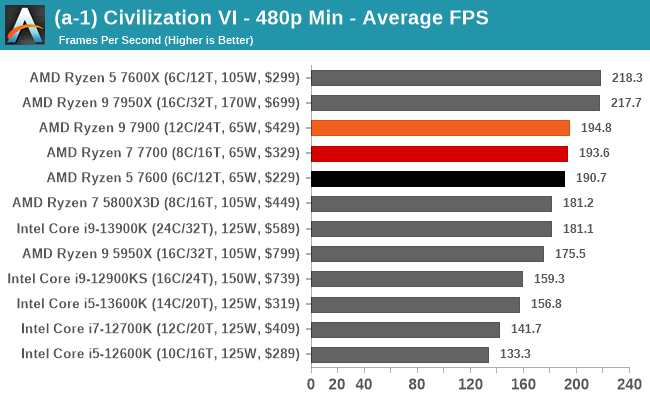
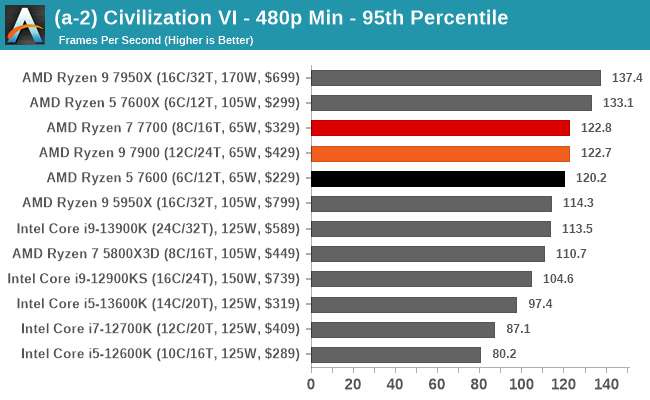
World of Tanks

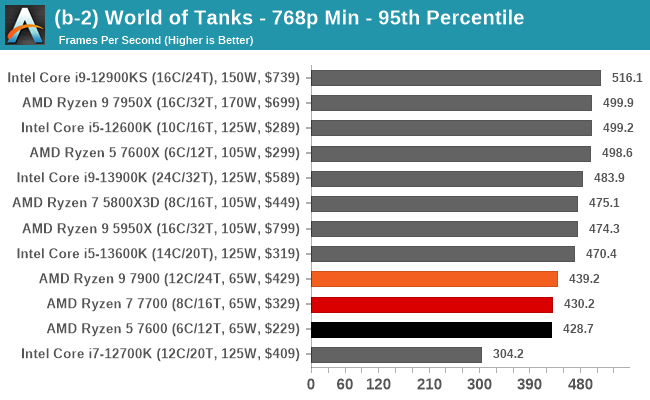
Borderlands 3
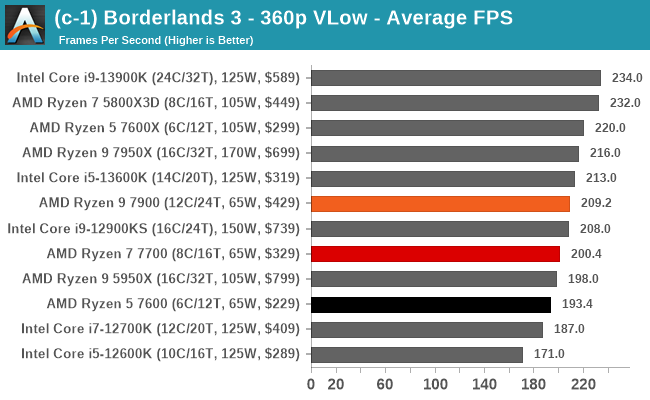
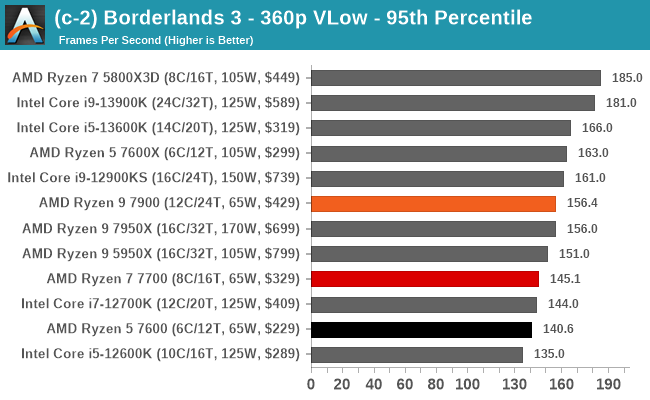
Grand Theft Auto V
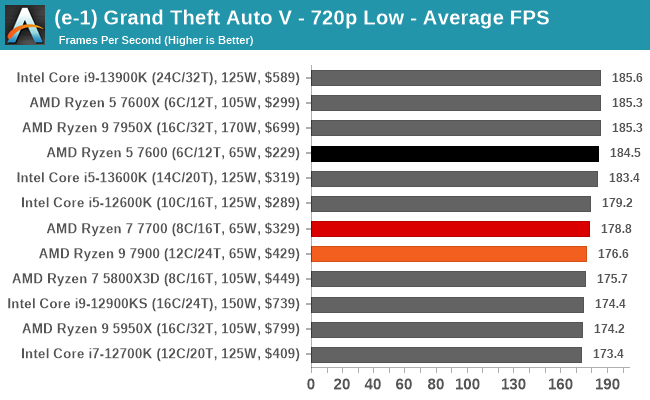
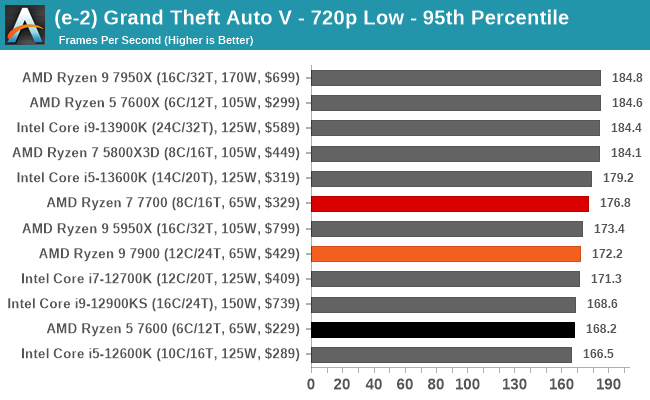
Red Dead Redemption 2
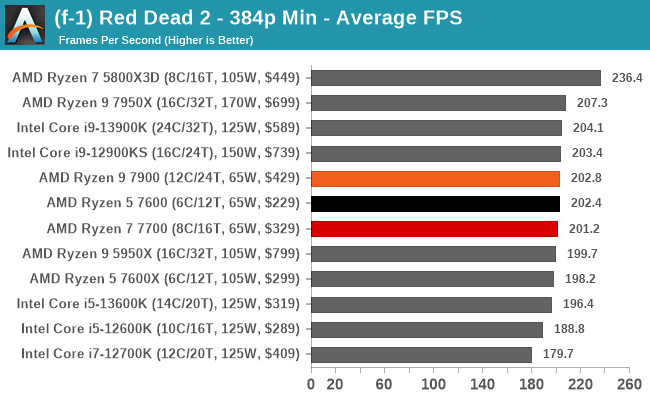
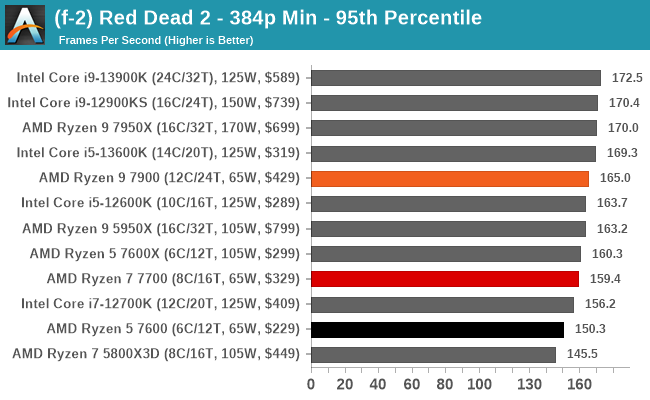
F1 2022
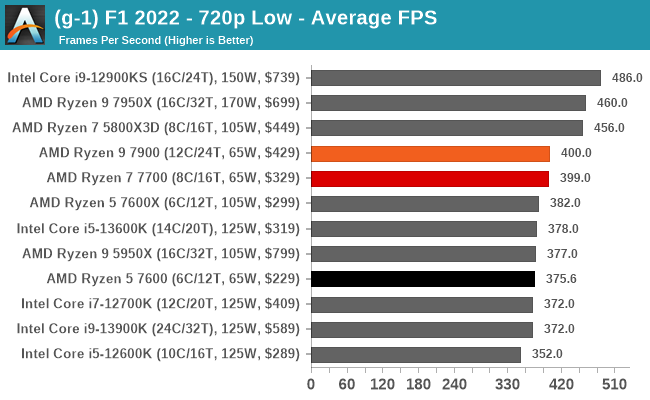
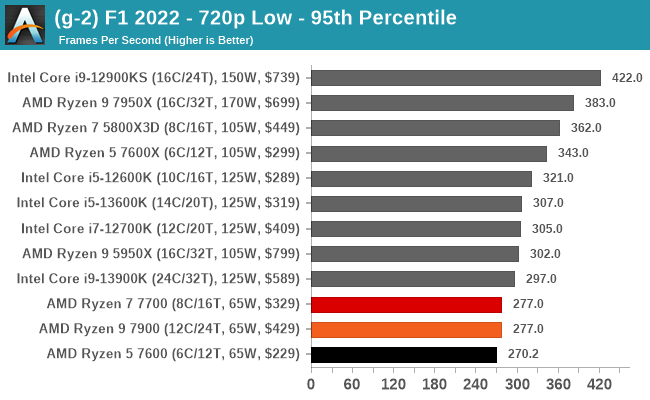
Hitman 3
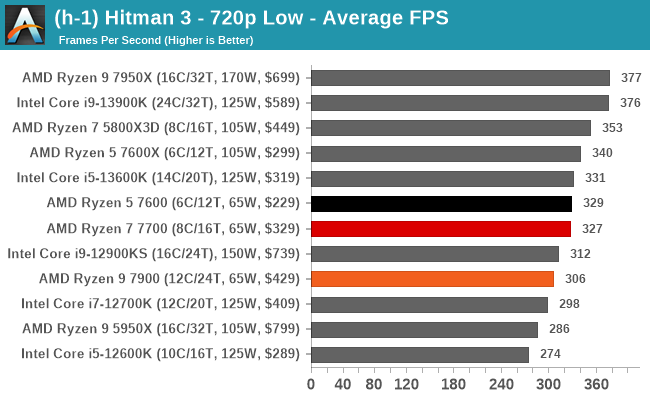
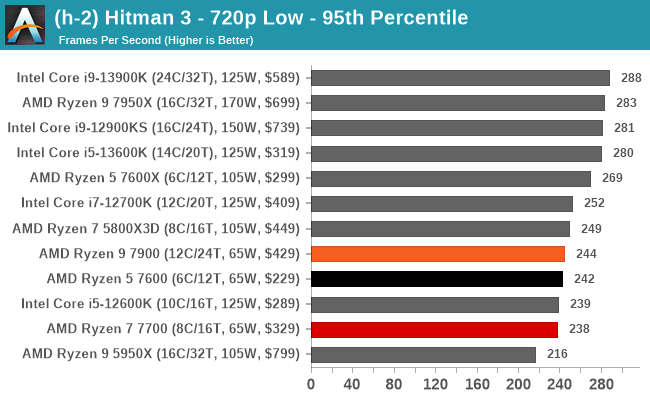
Total War: Warhammer 3
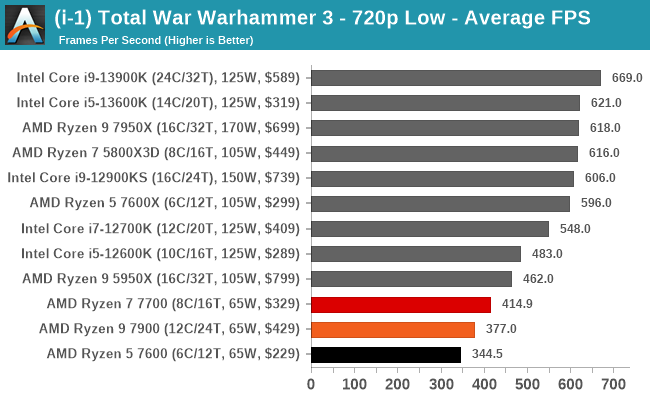
Cyberpunk 2077
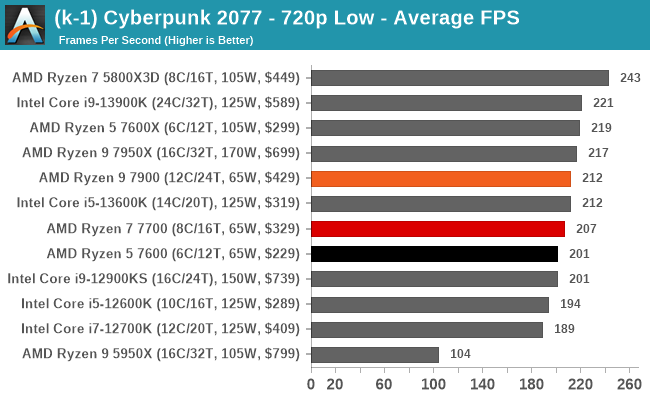

We saw relatively decent performance across the board at very low resolutions of 720p and below, with low to minimal settings selected to bring raw CPU performance into play as opposed to discrete graphics. In most titles, the 65 W Ryzen 7000 CPUs trade blows well compared to other SKUs from both AMD and Intel, despite their power limitations.
The biggest limitation of power came in our Total War Warhammer 3 benchmark, where limited power did seem to handicap performance at 720p more than we've seen in other games so far.










55 Comments
View All Comments
bcortens - Monday, January 9, 2023 - link
Does sustained power consumption look similar to peak power consumption?Why does your article lead with "Efficiency at 65 Watts" when the peak power is 90 Watts?
AshlayW - Monday, January 9, 2023 - link
Because the Platform Power Target (PPT) for '65W TDP' models from AMD has always been around 87W (~90 give or take). The TDP is thermal watts for cooling systems not sustained electrical watts for power usage. I assume the author is implying that the models are the AMD-rated 65W TDP and are efficient, not that they specifically use 65 watts, but I suppose it's kinda misleading.meacupla - Monday, January 9, 2023 - link
yeah, not all the electrical energy going into the chip ends up as heat energy.saratoga4 - Monday, January 9, 2023 - link
All of the electrical energy going into the chip does become heat aside from a tiny bit that leaves as bits on the various buses (which is mostly canceled out by energy coming in from other chips on the same bus). The difference between TDP and peak power is that the CPU can thermally throttle if needed.ballsystemlord - Monday, January 9, 2023 - link
A CPU is not a resistor. So not all the energy is converted into heat.For example, some of it goes down the PCIe bus, and heats up the PCB traces and PCIe card. Likewise with the RAM.
Samus - Wednesday, January 11, 2023 - link
Intel and AMD have dramatically different packaging. The TDP designation in AMD CPU's applies to the CPU portion of the package ie ZEN core chiplet(s) while the IO CCD is rolled into the PPT as it is effectively the rest of the "platform."If we were to try comparing fruits, AMD's PPT would be comparable to Intel's TDP + chipset (Z690 is 6-watts) + other external components that would otherwise be integrated in a Ryzen IO but as these architectures are vastly different a direct comparison is impossible; for example, AMD's IO is far more complex than Intel's, supporting a wider range of platform designs and IO types. While Intel and AMD both support DDR4\5 at this point within their memory controllers, PCIe 3.x\4.x\5.x is handled inside of AMD's IO while Intel offloads much of that to the chipset, only supporting some lanes inside the CPU, and many CPU's not supporting 5.x. To make matters worse, the Z690 is manufactured on a 14nm process while AMD's IO CCD is 7nm (or something like that) so while the Z690 would use much more power if it did the same thing as the AMD IO CCD, it doesn't. In fact it does very little and the package itself is tiny like 25mm2. This means the AMD IO handles a lot more while being 7nm while Intel integrates all of that into the CPU die which is a more refined 10nm process that efficiency is somewhere between TSMC 5nm and 7nm.
Basically AMD's CPU CCD (5nm?) is more efficient while their IO (7nm?) is less efficient and this doesn't entirely balance out compared to Intel's monolithic 10nm (which more efficient than TSMC's 7nm.)
This chart breaks it down better than I can - scroll down to density comparison: https://www.granitefirm.com/blog/us/2021/12/28/tsm...
ballsystemlord - Thursday, January 12, 2023 - link
It's unclear to me how this relates to my post.I was saying that not all the power is turned into heat, therefore, the 90w figure is not misleading.
ballsystemlord - Monday, January 9, 2023 - link
Also worth noting is that the power dissipated is related to the resistance of the component, not the amount of power going into the component. You should recall that from any basic series circuit you have worked with/on.escksu - Tuesday, January 10, 2023 - link
It's true that it's related to resistance but in the case of the cpu, it's mostly due to the rapid switching of transistors.escksu - Tuesday, January 10, 2023 - link
Not all but most of becomes heat. It's due to the rapid switching on/off of the transistors.